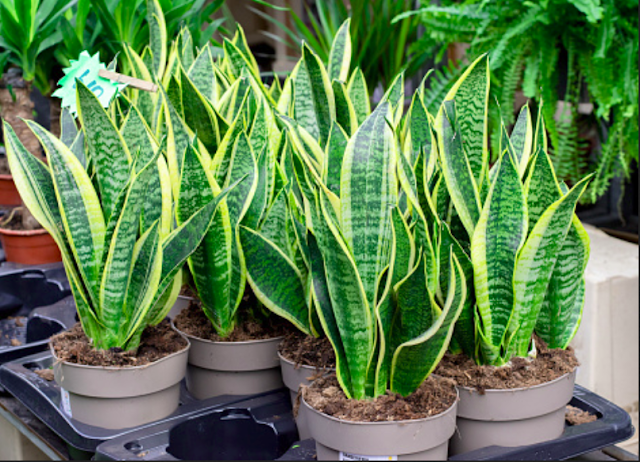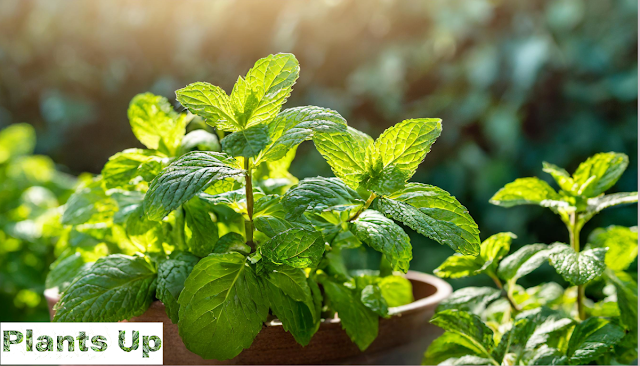.jpg) |
| Embracing the Resilience: A Symbol of Nature's Endurance |
In the world of indoor plants, there is one intriguing contender that is capturing hearts and beautifying spaces with its unique beauty and resilience – the snake plant. This plant, also known as sansevieria or
mother-in-law's tongue, has risen to prominence not only for its aesthetic appeal, but also for its remarkable ability to thrive in a variety of conditions.Join us as we delve into the world of snake plants, discovering their history, benefits, care tips, propagation methods, varieties, myths, and their undeniable role in enhancing the environments we live in.
Unveiling the Remarkable: The History and Origins of Snake Plants
The snake plant travels to the arid regions of West Africa, especially Nigeria and surrounding areas. This resilient beauty was first adopted in Europe during the 18th century for its ornamental value. It is named 'Snake Plant' because of the intricate patterns on its leaves, which resemble the skin of a snake. Today, its popularity has spread around the world, gracing homes, offices and even NASA's Clean Air Study, thanks to its exceptional air-purifying properties.
Elegance in Flexibility: Why Snake Plants Shine
The snake plant's allure lies not only in its charming appearance, but also in its tenacious ability to thrive where few other plants dare to thrive. Its sword-like leaves, ranging from vibrant green to variegated hues, create a wonderful visual contrast. However, what really sets it apart is its remarkable adaptability—from low-light conditions to drought-prone settings, the snake plant's endurance remains unmatched.
Air-Purifying Power: Snake Plants as Natural Cleansers
Among its many properties, the snake plant shines as an exceptional air purifier. During photosynthesis, it, like most plants, absorbs carbon dioxide and releases oxygen. However, what's really notable is its ability to filter toxins from the air, including formaldehyde, xylene, toluene, and nitrogen oxides. Adding a snake plant to your living or workplace can greatly improve the air quality, thereby promoting a healthier environment for all.
Green Companions: Snake Plants as Low-Maintenance Friends
For those who have busy schedules or limited gardening experience, the snake plant emerges as an ideal companion. Its hardy nature and drought tolerance make it forgiving of even the most neglectful caretakers. In fact, watering this plant sparingly and allowing its soil to dry out between waterings is key to its survival. It's an excellent choice for anyone who wants the benefits of indoor plants without the tedious maintenance.
Aesthetic Accents: Using Snake Plants in Interior Design
Snake plants blend seamlessly with diverse design aesthetics, from modern minimalist settings to bohemian-chic interiors. Their vertical growth and architectural foliage provide a dynamic visual element, adding a touch of beauty to any space. Whether placed in decorative pots, in hanging planters or as part of a curated indoor garden, snake plants exhibit a timeless charm that enhances the overall ambiance.
Caring for Your Snake Companion: Snake Plant Care Tips
 |
| Snake Plants |
Although snake plants are extremely easy to care for, a few guidelines can help ensure their prolific growth:
Light: They tolerate low to bright indirect light, which makes them versatile for a variety of lighting conditions.
Watering: Allow soil to dry between waterings; Over-watering can cause root rot.
Soil: Use a well-draining soil mix, preferably a cactus/succulent mix.
Temperature: They prefer average indoor temperatures, but can tolerate occasional fluctuations.
Propagation: Snake plants can be propagated through leaf cuttings or division. Simply cut a healthy leaf into segments and leave them in the callus before planting.
Adopting the Varieties: Discovering Different Snake Plant Species
The world of snake plants is rich in diversity, offering a variety of species and cultivars to choose from. Some popular cultivars include the classic Sansevieria trifasciata, also known as "mother-in-law's tongue," which has long, straight leaves with distinctive yellow edges.
Another favorite is Sansevieria cylindrica, characterized by its cylindrical leaves that add a touch of modern flair to any setting. Finding these different species can add depth and dimension to your indoor garden.
Snake Plants: Myth and Symbolism
Throughout history, snake plants have been associated with various myths and symbolic meanings. In Chinese culture, they are often associated with good luck and protection, making them a popular choice for homes and businesses.
Additionally, the vertical growth of snake plant is believed to promote upward energy flow and positive energy. Embracing these myths and symbolism can add an extra layer of significance to your plant's appearance.
Beyond indoors: snake plants in outdoor gardens
While snake plants are beloved for their role as indoor companions, they can also thrive outdoors in suitable climates. Whether as part of a xeriscaped garden, as a container garden on a balcony, or as accent plants in an arid landscape, snake plants can lend their unique beauty to outdoor spaces as well.
Health Benefits and Feng Shui: Enhancing Happiness
In addition to their aesthetic and air-purifying properties, snake plants are believed to provide various health benefits. Some cultures consider them to have healing properties, their presence promoting better sleep and reducing stress. In Feng Shui, snake plants are associated with positive energy flow and can be strategically placed to increase harmony within a space.
Propagation Adventures: Growing Your Snake Plant Family
Learning more about snake plant propagation can be a rewarding experience. Learning how to successfully propagate them through leaf cuttings or division can not only expand your plant collection, but also provide an opportunity to share the beauty of snake plants with friends and fellow plant enthusiasts .
Conclusion: A Piece of Nature's Beauty
The snake plant, with its resilience, air-purifying abilities, aesthetic appeal, rich variety, and multi-faceted symbolism, truly embodies the spirit of nature's artistry. From its historical origins to its contemporary role as a versatile companion, it has earned its place as a cherished addition to any living space. As you invite the beauty of the snake plant into your environment, you're not just welcoming a touch of nature's beauty - you're embracing a symbol of endurance, adaptability, and the timeless elegance that lives at the heart of the natural world .
Beyond its physical appearance, the snake plant invites us to contemplate its remarkable qualities. Its ability to thrive in the face of adversity reminds us of our own ability to adapt and thrive. Its air-purifying abilities underline the importance of a clean and healthy environment for our well-being. And its symbolism across cultures and history reminds us of the connections we make with the natural world and the stories we weave through plants.
So, whether you're a seasoned plant enthusiast or a novice looking to brighten up your space, the snake plant captivates with its beauty and flexibility. As you nurture this living masterpiece, you become part of a legacy that spans centuries, continents and cultures. You are living testimony to the power of nature to enhance our lives physically, aesthetically and symbolically.
Finally, the snake plant isn't just a houseplant; It is a companion to the journey of growth, exploration and appreciation of the wonders of the natural world. So, let it stand in its place, a powerful reminder that beauty and resilience can co-exist harmoniously, and there are no limits to the beauty of nature's creations.
Happy Gardening!
